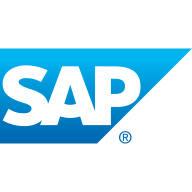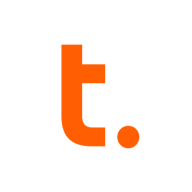

SAP Data Services and Teradata compete in the data management category. SAP Data Services has the upper hand in data migration and integration with SAP environments, while Teradata excels in data warehousing solutions and scalability.
Features: SAP Data Services provides comprehensive data handling features including data migration, data quality transforms, and seamless connectivity with SAP systems. It offers reliable impact analysis and easy integration, especially beneficial in SAP setups. User feedback emphasizes its ease of use for ETL tasks. Teradata offers robust parallel processing architecture and advanced analytics, with highlights in its columnar and temporal functionalities. Users value its strong in-database analytics capabilities and performance in large-scale data warehousing.
Room for Improvement: SAP Data Services could enhance the integration of web services and complex matching transforms. Improvements are needed for error logging and dynamic scheduling, alongside better cloud service support. Teradata faces challenges with cost-effectiveness and on-premises scalability, along with improving unstructured data handling. Its pricing structure is often seen as a barrier to competitiveness against cloud-based alternatives.
Ease of Deployment and Customer Service: SAP Data Services excels in straightforward deployment for on-premises and hybrid environments, with responsive technical support, although some users experience delays. Teradata offers flexibility across cloud environments with generally reliable support, but requires improvements in responsiveness for on-premises and hybrid integrations according to feedback.
Pricing and ROI: SAP Data Services is considered costly and more suitable for large enterprises, offering a usage-based pricing model that can be efficient for extensive data processing. Despite being expensive for smaller businesses, it delivers notable ROI through time and cost savings. Teradata is regarded as high-end, justified by superior performance and scalability benefits. Its ROI is marked by efficiency in large data analytics, though pricing adjustments could improve market competitiveness.
The technical support from Teradata is quite advanced.
Customer support is very good, rated eight out of ten under our essential agreement.
This expansion can occur without incurring downtime or taking systems offline.
Scalability is complex as you need to purchase a license and coordinate with Teradata for additional disk space and CPU.
I find the stability to be almost a ten out of ten.
The workload management and software maturity provide a reliable system.
Unlike SQL and Oracle, which have in-built replication capabilities, we don't have similar functionality with Teradata.
Initially, it may seem expensive compared to similar cloud databases, however, it offers significant value in performance, stability, and overall output once in use.
Teradata is much more expensive than SQL, which is well-performed and cheaper.
The data mover is valuable over the last two years as it allows us to achieve data replication to our disaster recovery systems.


SAP Data Services is a top-ranking data integration and data quality tool. This is a product that aims to provide its users with effective access to their data in order to transform it and connect it to various business processes. SAP Data Services offers companies detailed data insights which improve decision-making and make company operations more effective.
Organizations can increase the value of their structured and unstructured data with the functionalities of this product regarding data integration, quality, and cleansing. Through various components such as:
the product transforms data into a ready-to-use resource for business insights.
Some of the key components of SAP Data Services include:
Through these components, the product allows its clients to access and integrate data sources and targets with native connectors. Users can derive meaning from unstructured text data, match data to reduce duplicates, and see the impact of data quality issues. The tool also offers the option to enable parallel processing, bulk data loading, and grid computing for high-volume data loads.
SAP Data Services Features
The solution has different features for data integration, data quality, data profiling, and processing of text data. Using these features, clients can manage their company's data easily and achieve excellent results by optimizing it. Some of the product’s features include:
SAP Data Services Benefits
This solution offers various benefits to its clients regarding the efficient operation of their data. The key benefits of SAP Data Services include:
Reviews from Real Users
According to Michael Lutz, senior data warehouse developer at Fox Chase Cancer Center, SAP Data Services is a powerful tool that does a lot.
An associate consultant at a consultancy says the tool is easy to use, simple to implement, and offers very good mapping capabilities.
Teradata is a scalable data analytics platform designed to meet enterprise demands for large-scale data management and processing, focusing on performance, scalability, and security for complex query executions.
As a leading data warehousing solution, Teradata integrates advanced analytics enabling organizations to derive insights from massive datasets. It supports high-volume data workloads with its architecture optimized for analytical queries. Users benefit from its robust scalability, allowing seamless expansion as data grows. Teradata's SQL engine is compatible with a wide range of data types, ensuring flexibility in data analysis. With advanced security measures, it protects sensitive data across various environments, providing peace of mind to users handling critical information.
What are the most important features of Teradata?Teradata is widely used in industries like finance, telecommunications, and healthcare, where data-driven decisions are critical. Companies leverage its robust analytics capabilities to enhance customer experiences, streamline operations, and ensure compliance with regulatory requirements. In these sectors, quick access to data insights can significantly impact competitive advantage.
We monitor all Data Integration reviews to prevent fraudulent reviews and keep review quality high. We do not post reviews by company employees or direct competitors. We validate each review for authenticity via cross-reference with LinkedIn, and personal follow-up with the reviewer when necessary.